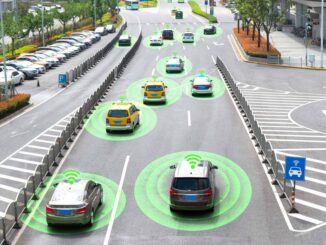
Chances are that you’re reading this article with a digital device, such as a smartphone, tablet, desktop, or laptop computer. Tom Chang MD, an ophthalmologist in Pasadena, California, wants to underscore the importance of using devices correctly. This is crucial, to avoid eyestrain and other vision issues.
You may be more exposed to glare than you realize, depending on how the screen is oriented. Lighting conditions are another factor. Too much sun, such as when you’re outside at noon, makes it harder to see screens. Think of how much you squint when looking at your mobile device.
Many people use digital devices for getting news, entertainment, and email. They also rely on portable screens for school or work. Perusing all of that content results in multiple hours of staring at glowing displays. The result can be digital eyestrain.
About Digital Eye Strain
Tom Chang MD uses the term “digital eye strain” to cover a range of issues that stem from people staring at electronic devices.
Tom Chang MD explains that excessive use of phones and computers can lead to digital eye strain. This form of eye strain occurs with symptoms including dry eyes, blurred vision, and headaches. It’s a modern ailment, that only became possible after the start of the electronics age.
Tom Chang MD’s Advice on Avoiding Digital Eye Strain
Tom Chang MD recommends that people give their eyes a break on a regular basis. An easy way to do this is to keep in mind the “20/20/20” rule.
When using a device, put it down or look away from the screen approximately once every 20 minutes. Take a 20-second break. Look at something 20 feet away, so your eyes switch from focusing on a phone 12 inches from your face.
How your body is positioned can be another factor in digital eye strain. Ideally, you will place the monitor on your desktop or laptop PC so you can type while looking ahead.
Otherwise, you wind up craning your neck to one side or the other. Inside an office, use lower wattage light bulbs. Aim the screen so the glare from overhead lights isn’t a factor. Avoid viewing a screen when light from a window can shine directly on it. But when the layout of your space doesn’t give you options to avoid glare, you can install a glare filter.
Diverting Your Gaze From Smartphones, Tablets and Computers Periodically Is Crucial for Ocular Health.
Electronic devices are so heavily integrated into people’s lives these days. That means it’s easy to take them for granted and to use them without thinking about negative effects. But it’s essential to be proactive and cut down on the screen-gazing time. Failure to do so can jeopardize people’s ocular well-being.
Unfortunately, it’s easy to forget to take a break from screen time. This is especially true when you get caught up in a video or are churning through work emails for hours.
Tom Chang MD advises his patients to employ the devices themselves to remind them to take a break from screen time. You can use an app on your smartphone to remind you to get up and look away every so often.
Another method is to set a simple timer on your laptop or desktop computer with an alarm. It will go off once in a while, reminding you to divert your gaze.
Eventually, you will get in the habit of pausing an email to look across the room for a few seconds. Now you have an excuse to stare up at the ceiling, looking as though you are lost in thought. What you’re really doing is protecting your vision.
Throughout the day, remember to keep blinking. It might seem strange to think people need to be reminded of this basic action. But sometimes folks stare at their computer screen so intently, they actually forget to blink for long periods. That leads to dry eyes, though, which is a painful condition easily avoided.
Practice Makes Perfect When it Comes to Avoiding Eye Strain.
Learn more about Tom Chang MD here.














Leave a Reply
Be the First to Comment!
You must be logged in to post a comment.
You must be logged in to post a comment.